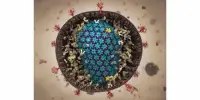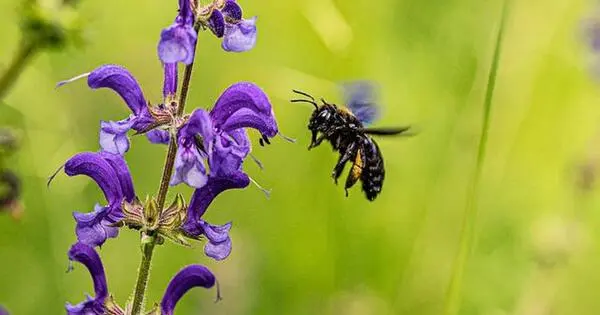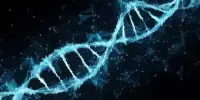To eliminate their hosts, insect-killing bacteria often emit poisons. The bacteria Photorhabdus luminescens, for example, injects insect larvae with the fatal ‘Makes caterpillars floppy 1’ (Mcf1) toxin, causing them to droop before dying. However, how Mcf1 causes such devastation has remained unknown.
Researchers led by Stefan Raunser, Director of the Max Planck Institute of Molecular Physiology in Dortmund, successfully used cryo-electron microscopy and biochemical assays to define the first-ever Mcf1 structure, allowing them to suggest a molecular mechanism for the toxin’s action. Understanding how bacterial toxins carry out their lethal function in such precision is extremely useful for developing novel biopesticides, decreasing the need of barely targeted chemical agents with negative consequences for the ecosystem.
“Ours is the first-ever structural study of this toxin,” explains Alexander Belyy, first author of the study. The challenge of the project, which took a decade of work, lay in the fact that the protein is relatively large and composed of multiple modules, each devoted to a specific function. “The use of our cutting-edge cryo-EM equipment and computational power was instrumental to resolve this structure,” says Stefan Raunser.
Ours is the first-ever structural study of this toxin. The use of our cutting-edge cryo-EM equipment and computational power was instrumental to resolve this structure,” says Stefan Raunser.
Alexander Belyy
Cryo-EM provides researchers with 3D images of proteins at near-atomic resolution (3.6 Ångstrom), revealing details 200,000 times smaller than the breadth of a human hair. The scientists were able to demonstrate that the structure of Mcf1 resembles a seahorse, with the head storing numerous hazardous payloads and the tail section capable of attaching to target cells. After bacteria in the host insect release the toxin, three domains in its tail region recognize and bind to the membrane of the target cell.
Another domain of the tail then transfers the head across the membrane into the cell’s cytoplasm. Once inside, the head interacts with local proteins to stimulate the release of two toxic payloads. These deadly modules disrupt the activity of essential proteins in the cell, leading to its death — and ultimately to the death of the entire insect within 24 hours of intoxication.

New organic pest control agents
Seahorse-like toxins, also known as α-toxins, are potent insecticidal peptides derived from the venom of sea anemones. These toxins are named “seahorse-like” due to their structure resembling the shape of a seahorse when visualized in three dimensions. These toxins primarily target insects by disrupting the functioning of their nervous systems.
Intriguingly, the researchers discovered that the modular structure of the tail and the first phases of Mcf1 poisoning are quite similar to toxins from Clostridioides difficile, a human infection that causes over 120,000 hospitalizations in Europe each year. “Our study, which was originally aimed at improving biopesticides, will also have an impact on our understanding of human diseases,” says Philipp Heilen, the paper’s co-first author.
Looking ahead, MPI scientists hope to understand in molecular detail how Mcf1’s toxic payloads cause cell death. “This new knowledge also enables the engineering of highly specific insecticidal toxins,” adds Stefan Raunser, implying another prospective research direction: developing new toxin variations beneficial for ecological pest management.
















